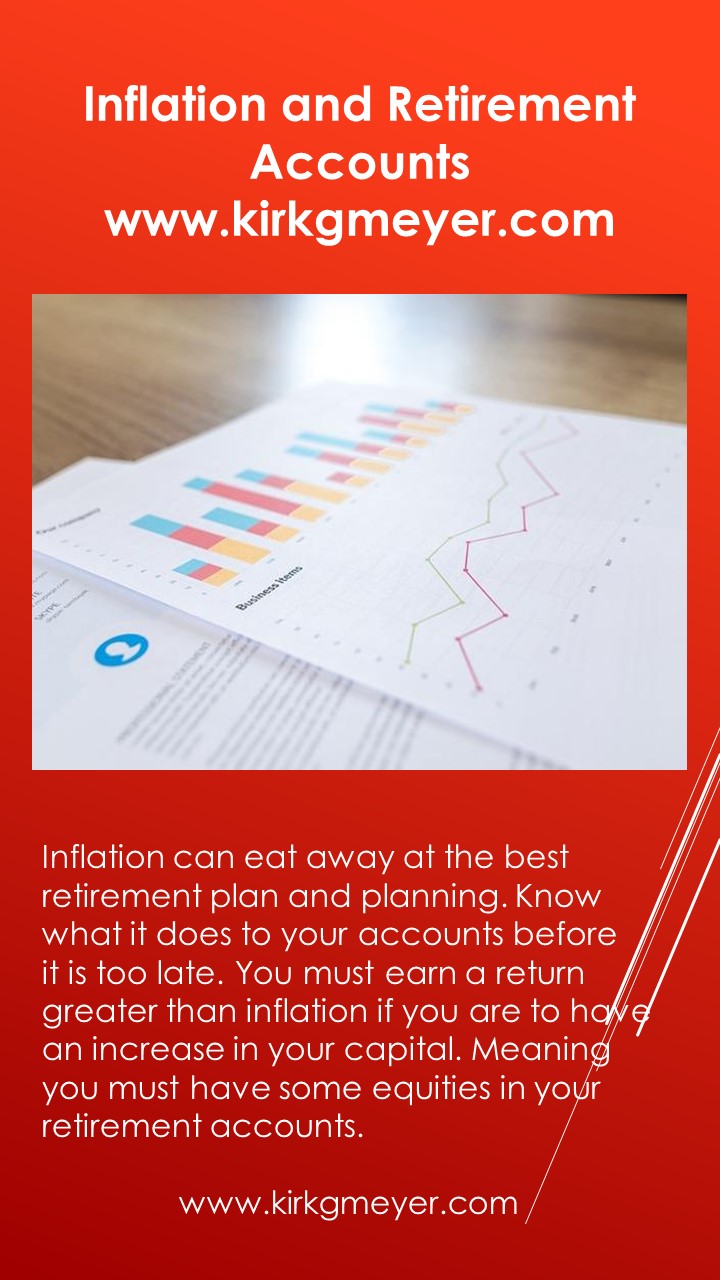
Do you understand how inflation can affect your retirement? If not, you might want to read this post and consider how inflation can have a distinct impact on your retirement accounts. The basics of this are that inflation will erode the purchasing power of your retirement accounts. The total effect of inflation will depend on the actual rate of inflation we experience over a given time period.
The Federal Reserve tries to maintain inflation at about 2% annually and not at zero as many people would assume. To illustrate how inflation can affect your savings as it is basically a compounding effect very similar to when you invest in a certificate of deposit and let the money roll over from period to period and “compound.” So, a little test on the power of compounding. Would you rather receive $5 million today or a penny today that doubles every day for the next thirty days?
Most people would gladly accept the $5 million today and leave it at that as no one sees the power of a penny doubling every day for thirty days. But long-term compounding is very effective at growing wealth and in the case of inflation taking away buying power. So, the answer is to take the compounding penny, and at the end of the thirty days, you would have over $10 million and not just the immediate $5 million. And when it comes to inflation, we do not notice that the compounding effect is slowly eroding how far a dollar will go at some point in the future.
So what is inflation? In some general terms, it is the sustained increase over time in the prices we pay for goods and services. Or another way of seeing this is the fall in the value of our money over a period of time. As prices rise, we simply cannot buy as much as we once did due to the fall of the purchasing power of the dollar. And the opposite is also true in the case of deflation as Japan as seen over the past several decades and that is when the dollar will buy more over time as the prices for goods and services has fallen.
The way in which we measure the rate of inflation in the US is Consumer Price Index or CPI. This measures inflation in mainly urban areas and covers a broad spectrum of good and services produced in the US. But each person will experience inflation differently as no two individuals or families are the same. Some people have children, some people have college expenses, others are traveling, and any have healthcare expenses to deal with. And while the CPI provides us with an average each of these items individually experiences growth at different rates with education and healthcare generally grow faster than other items.
Many financial planners use an inflation rate of 3% as a general rule of thumb. And that is about the historical average of inflation since 1913 when the Bureau of Labor Statistics started keeping track of inflation. But that does not mean that 3% is the best number for you to use when calculating the effects of inflation on your retirement accounts. At some points in time inflation is higher than at others and 3% may not be the best benchmark to use to estimate inflation’s effects.
By the decades since the BLS started keeping track of the CPI, it has ranged from a high of 11.2% in the 1910’s to a low of -2.0% in the 1930’s. During the 1970’s the rate of inflation compounded at a rate over 7% with a high in 1979 at 13%. But overall, in recent decades the rate of inflation has been on a downward trend and depending on when you retire can have an enormous effect on your inflation rates.
If we look at a mother and son who each retire at different times and both live for 25 years in retirement, we can see the effect inflation will have on each. The mom retires at age 65 in 1968 and lives until 1993 while her son retires in 1992 and lives until 2017. The mother has retired in one of the worst periods of inflation in the last half century and the son at one of the best periods of time. The period from 1968 to 1993 saw inflation average 5.8% and the period from 1992 to 2017 saw an inflation rate of 2.2%, far less than that of the mother. And over a rolling 25-year period inflation has been on a decline since 1968.
So using a 3% inflation rate may not do you justice in the overall scheme of things as over the last 35 years it has averaged 2.68%. The last 20 years has been 2.14%, the last ten 1.61%, the last five 1.43% and the last year was 2.11%. Of course, this downward trend does not mean there will not be years in which a spike in inflation will not occur, take 2007 at 4.1%.
So does it really matter if inflation is 3% or 2.5%? The answer is yea that 0.5% can and does make a difference compounded over 25 years. If you have two individuals who each start with 1 million dollars one using 3% and the other 2.5% at the end of the 25 years, they will see a fairly big difference. For the individual who used 3% their purchasing power is $477,606, and the one who used 2.5% has a purchasing power of $539,391 or $61,785 more. Meaning the inflation rate of 2.5% has a 13% higher rate of purchasing power over the person who used 3% for inflation.
So how do you save for retirement and outpace inflation? The answer to that is one of two ways really, invest in equities or Treasury Inflation Protected Securities. If we go back to our retired mother and son, we would see that if the mother had invested in the S&P 500 with all dividends reinvested she would have seen an after-inflation return of 4.2%. And the son would have done even better with an after-inflation return of 7.2%. This is why it is important even for someone in retirement to keep a fair amount of their retirement funds invested in equities, to outpace inflation.
These are just some of the basics of inflation and retirement accounts. If you have any questions or comments, please feel free to leave a comment here or message me directly.







